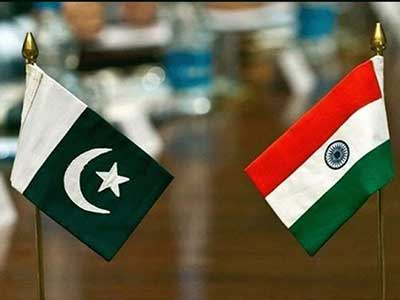Date: 08/11/2022
Relevance: GS-2: India and its Neighbourhood- Relations.
Key Phrases: Age of minimalism, India-Pakistan relations, Pathankot airbase, Surgical Strikes, 2019 terror attack in Pulwama, Indus Waters Treaty, Kashmir Issue, backchannel conversation, Line of Control.
Why in News?
- India-Pakistan relations have entered an age of minimalism and there is very little bilateral contact today, even fewer expectations of a bilateral breakthrough, and hardly any warmth in the relationship.
Efforts of engagement:
- The present government began with the standard package of engaging Pakistan.
- There was the invitation extended to Nawaz Sharif (the then Pakistan Prime Minister) for the oath ceremony in New Delhi (May 2014), which Mr. Sharif attended, followed by the Prime Minister’s surprise visit to Lahore (December 2015), and the discreet meetings between the two National Security Advisers (NSA).
Stall in the relationship:
- The 2016 Pathankot airbase and the September 2016 terror attack in Uri, which led to the ‘Surgical Strikes’ by India, practically froze the relationship.
- The February 2019 terror attack in Pulwama and the government’s decisions made in August 2019 on Kashmir put the relationship in a deep freeze.
- Over time, New Delhi appears to have realized that it requires too much time, commitment, and effort to make peace with Pakistan — and little guarantee that it will succeed despite all that.
- This historical and experiential learning about the ‘futility’ of pursuing a normal relationship with its western neighbour has led to this current phase of minimalism.
- As a result, India-Pakistan relations today have been reduced to a backchannel conversation between the Indian NSA and the Pakistan Army establishment.
The rationale behind the age of minimalism:
- History of missed opportunities:
- For one, the relationship is a history of missed opportunities, failed attempts at conflict resolution, political inability to resolve conflicts due to the dual power centre in Pakistan, and the lack of political will on either side.
- These disappointments have led to a recognition in New Delhi, that making comprehensive peace with Pakistan is a fool’s errand.
- Difficult to resolve complicated conflicts:
- There is a recognition on both sides that for all the talk about conflict resolution, there is no easy way to resolve their complicated conflicts and that, going forward, bilateral conflict resolution may get harder due to rising populism fuelled by online hate.
- New Delhi also realizes that the traditional logic in India that it should first settle its conflicts with Pakistan and then move on to addressing the bigger challenges may take New Delhi nowhere for, after all, none of the key bilateral conflicts between them has been resolved since the Indus Waters Treaty of 1960.
- No need for Pakistan for peace in Kashmir:
- There is also certain confidence in New Delhi today that it does not need to talk to Pakistan to ensure peace inside Kashmir.
- This growing confidence in New Delhi about its capability to defend Kashmir against Pakistani aggression or terror attacks, and the belief in deterrence by punishment will further moderate India’s desire to have elaborate conflict resolution exercises with Pakistan.
- Preoccupied with other geopolitical challenges:
- Both sides today are preoccupied with other geopolitical challenges — Pakistan with the Taliban-led Afghanistan, and India with an aggressive China on its borders — thereby keeping them busy elsewhere than with each other.
Features of the age of minimalism in India-Pakistan relations:
- Focus on urgent issues only:
- For one, the interlocutors on either side (more so on the Indian side) appear to have adopted a clinical approach to dealing with the other side: discuss and deal with only those issues that need urgent attention.
- The unmissable focus on conflict management, with little focus on
conflict resolution:
- Kashmir, for instance, is discussed in the context of the modalities for sustaining the ceasefire agreement, and not the historical political conflict over Kashmir.
- But given that the current engagement is decidedly for tactical purposes, larger political issues are kept outside of its purview.
- Usefulness of minimalist approach:
- It has so far served as a useful platform for clarifying red lines, expectation management, and achieving limited but clear outcomes.
- The 2021 February ceasefire agreement is one such outcome, and the relative reduction in violence in Kashmir is another.
Dealing with Rawalpindi
- The most important aspect of this minimalist approach is - New Delhi’s ability to shed its traditional hesitations about directly dealing with the Pakistani army establishment.
- India has traditionally been of the view that it would only engage with the political establishment in Islamabad.
- This had a structural issue - attempts at conflict resolution by India with Pakistan did not always have the blessings of Rawalpindi, which occasionally torpedoed such attempts.
- The current arrangement, wherein there is little contact between New Delhi and Islamabad but between Rawalpindi and New Delhi, has not only corrected the structural problem in India-Pakistan relations, but it also appears that the Pakistan Army takes this direct approach more seriously. To that extent, this is a win-win strategy.
Conclusion:
- Given that the current strategy of minimalist engagement with the Pakistani deep state is unlikely to be able to tackle the larger substantive political questions, the process may run into challenges over time or its tactical utility might eventually be exhausted.
- Maintaining stability in the South Asian region is in India’s interest, as investors would not invest in an unstable region.
- Moreover, engaging with Pakistan will give India a geographical way to resume its engagement with Afghanistan and resource-rich Central Asian states.
- Extending a hand to Pakistan will provide an opportunity to India to balance China’s expansionist policy, which has become obvious since the Galwan crisis.
Source: The Hindu
Mains Question:
Q. What are the rationale and features of the age of minimalism in the India-Pakistan relationship? Discuss.








